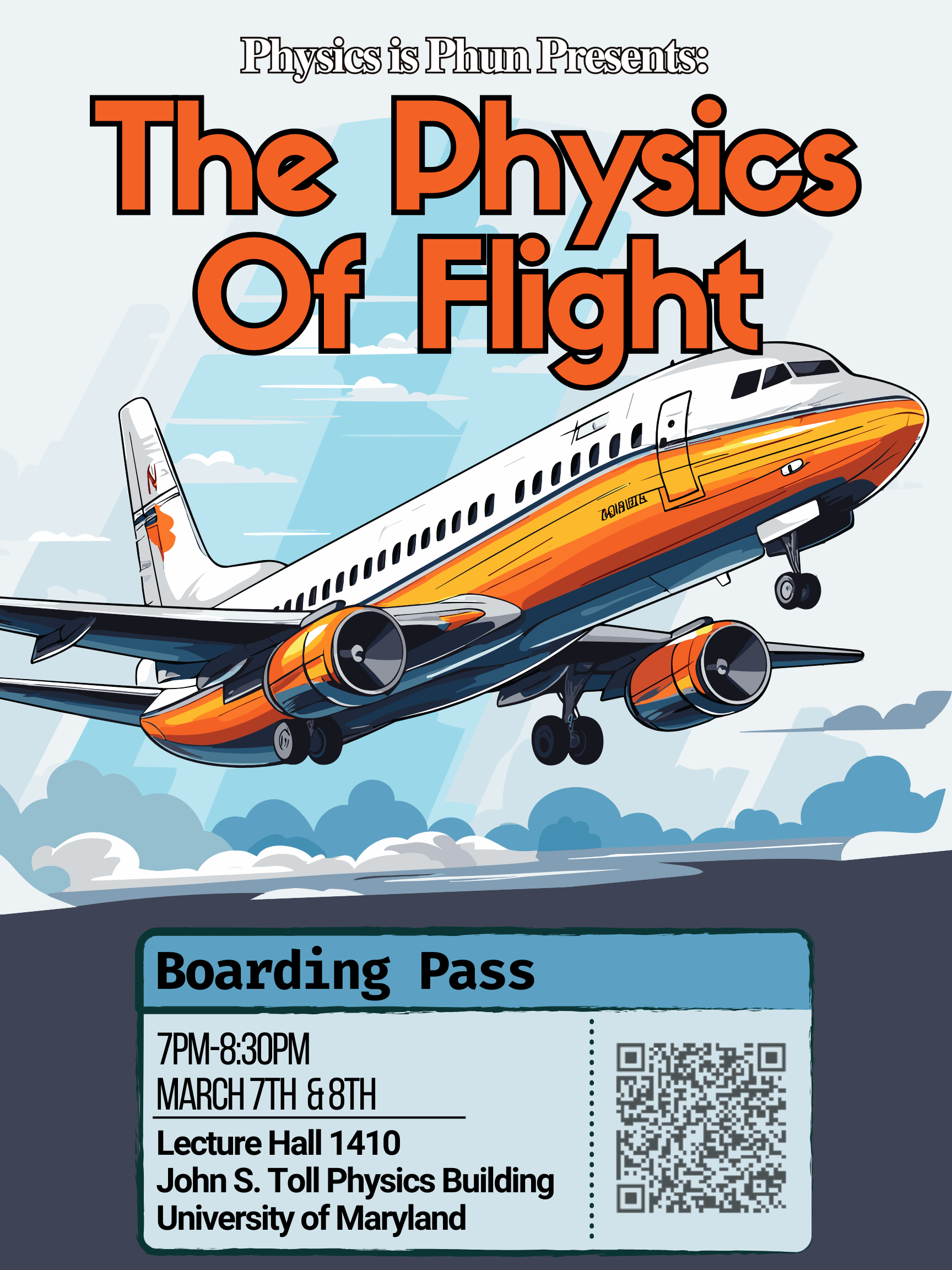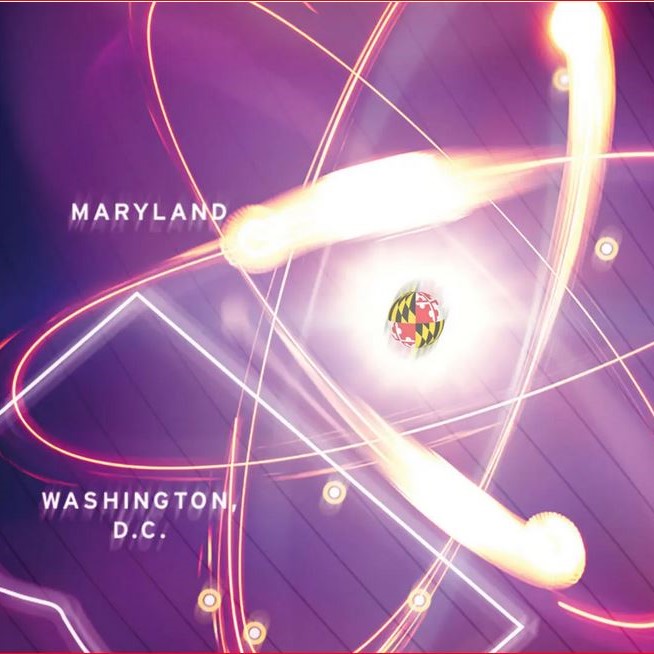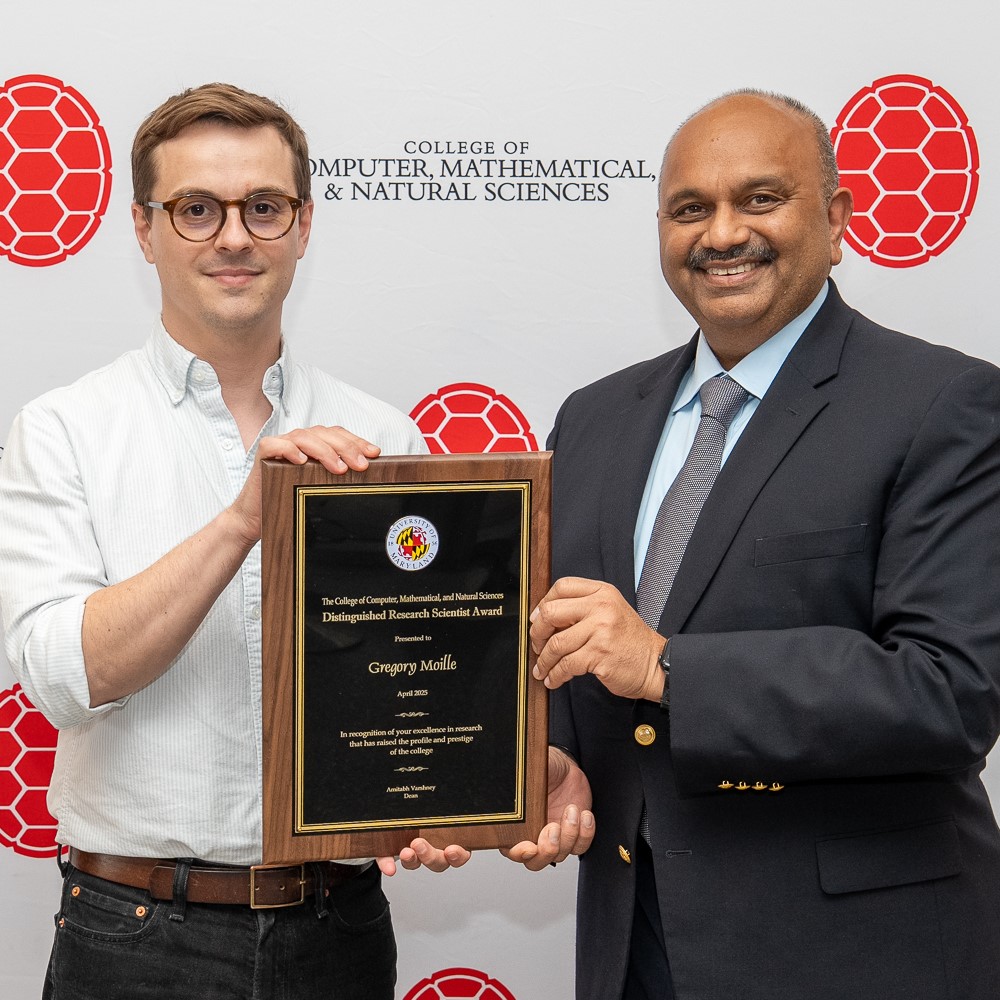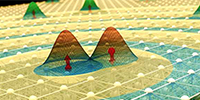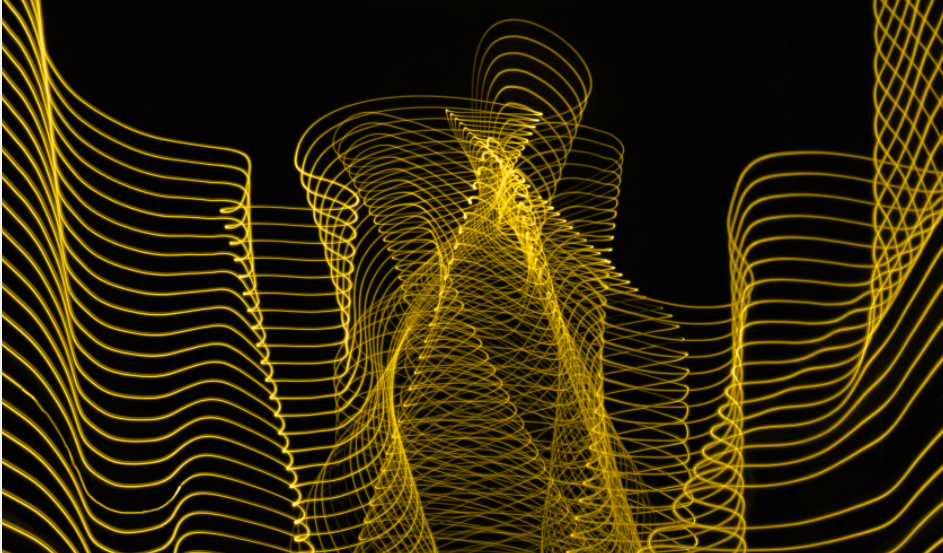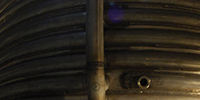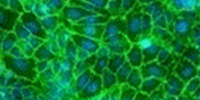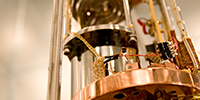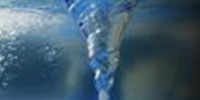September 5 | Smitha Vishveshwara, University of Illinois Hosted by Jay Sau and Johnpierre Paglione Quantum Escapades: From nanoconstrictions to black holesTime and again, one encounters marvelous unifying physics that links phenomena from the most miniscule to astronomical scales. Universal phase transitions in magnets, superconductors, and the cosmos; simple harmonic motion from neutrinos to fluids to galaxies; defect and structure formation in the early Universe and in liquid Helium---to name just a few. Here, we explore how the inverted harmonic oscillator, the lesser known sister of the simple harmonic oscillator, offers fertile grounds for the same beautiful dynamics across scales and tantalizing ‘quantum escapades’. In its presence, deep parallels become manifest in quantum Hall systems, quantum optics, and curved spacetime. We journey through these parallels, linking phenomena as disparate as tunneling across point contacts, squeezing, Hawking-Unruh radiation, and black hole ringdown to offer fresh cross-disciplinary perspectives and new predictions. |
September 12 | Abhay Deshpande, Stony Brook University
Hosted by Xiangdong Ji & Raman Sundrum The Electron Ion Collider (Science and Status):
Studying the glue that binds us all.Endorsement of the science case of the Electron Ion Collider (EIC) in 2018 by the US National Academy of Sciences, Engineering and Medicine — as being essential, fundamental and timely — triggered the US Department of Energy (DoE) to initiate its realization. It will be built at Brookhaven National Laboratory in partnership with Jefferson Laboratory using the existing tunnel of the Relativistic Heavy Ion Collider (RHIC) and one of its rings. Up to two detectors are envisioned to realize the EIC science.
The three pillars of EIC science include understanding the emergence of proton’s spin, mass and high gluon fields — saturated state of gluon fields — if they exist inside the nucleons and nuclei. All of these have at their core somewhat embarrassing deficit in our understanding of the role of gluons in QCD. Due to its high luminosity coupled with variable energy & polarized beams, study of numerous other QCD phenomena would be possible along with (some targeted) investigations of physics beyond the Standard Model. Diversity in its physics program demands unusual flexibility in the EIC operations. This makes the EIC one of the most challenging accelerators to be built, presenting exciting research opportunities for accelerator scientists as well. International collaborations are now being formed for the 1st detector and for the accelerator. In this talk I will review the science of EIC accessible to students and early career scientists and present the current status and planning for the detectors and the machine construction. |
September 19 | Jason Hogan, Stanford University Hosted by Steve Rolston Long baseline clock atom interferometry for gravitational wave and dark matter detectionAtom interferometry and atomic clocks continue to make impressive gains in sensitivity and time precision. I will discuss the potential for using atomic sensors for gravitational wave detection and searches for dark matter. Interest in this has driven the growth of the emerging field of long-baseline atomic sensing, which aims to scale up “tabletop” experiments to the kilometer-scale and beyond. Key to this is the development of a new type of “clock” atom interferometry based on narrow-line optical transitions that combines inertial sensitivity with features from the best atomic clocks. This technique is central to the MAGIS-100 experiment, a 100-meter-tall atomic sensor now under construction at Fermilab that will probe for ultra-light dark matter and will serve as a prototype for a future gravitational wave detector targeting the unexplored “mid-band” frequency range. Reaching the sensitivity needed for these ambitious goals also requires substantial advances in atom optics in order to increase the space-time area of the interferometer. I will describe atom optics that use Floquet modulation to reach pulse fidelities exceeding 99.4%, allowing for a record-setting momentum separation between the interferometer arms of over 400 ћk. |
September 26 | Maissam Barkeshli, University of Maryland Coloring Hofstadter's Butterfly: New Topological Invariants of Crystalline Quantum MatterThe discovery of quantized Hall conductance in the early 1980s showed how quantum phases of matter can be distinguished by topological invariants. This kicked off a decades-long quest to understand subtle distinguishing topological aspects of quantum matter. In this talk, I will describe a new set of topological invariants that arise in quantum systems with crystalline symmetry. Analogous to the quantized Hall conductance, these new invariants dictate quantized responses of the system to crystal defects. Our understanding of how to extract these invariants from quantum systems has provided the first new ways to color Hofstadter's famous fractal butterfly in over 40 years. |
October 3
| R.I. Sujith, Indian Institute of Technology, Madras
Hosted by Raj Roy Complex System Approach to Investigate and Mitigate Thermoacoustic Instability in Turbulent CombustorsThe onset of thermoacoustic instability leading to large amplitude self-sustained oscillations is a plaguing problem in the development of modern gas turbine and rocket engines. Thermoacoustic instability occurs as a consequence of the nonlinear interaction between the unsteady flame, the hydrodynamic field and the acoustic field in the combustor. Traditionally, this phenomenon has been modeled using a linear acoustic framework. An alternate perspective in which a thermoacoustic system in a turbulent combustor can be viewed as a complex system and its dynamics be perceived as emergent behaviors of this complex system has emerged recently. This perspective has led to strategies to forewarn and mitigate thermoacoustic instability based on complex systems theory. |
October 10 | Charles Clark, National Institute of Standards and Technology Hosted by Konstantina Trivisa Generation, Detection and Application of Twisted Waves of Light and NeutronsIt was about 50 years ago today, when "Dislocations in wave trains" came into play. Twenty years on, "Dislocations" became a nineties hit following the ingenious experiments of Soskin et al., that showed the promise of applications of twisted or structured light with non-vanishing orbital angular momentum about its propagation axis. Modern use cases for such modalities include increased communication bandwidth for 6G applications. Quantum particle beams can also be shaped by analogue tools of optics. I shall present recent results for neutrons, made possible by microfabricated synthetic holograms containing millions of forked dislocation gratings of the type envisaged by Soskin, et al. |
October 17 Sponsored by Prof. Ed Ott | John C. Mather, NASA
This lecture will be held in 1101 A. James Clark Hall, with pre-lecture socialization at 3:30 p.m.
Opening the Infrared Treasure Chest with JWSTThe James Webb Space Telescope was launched on Dec. 25, 2021, and commissioning was completed in early July 2022. With its 6.5 m golden eye, and cameras and spectrometers covering 0.6 to 28 µm, Webb is already producing magnificent images of galaxies, active galactic nuclei, star-forming regions, and planets. Scientists are hunting for some of the first objects that formed after the Big Bang, the first black holes (primordial or formed in galaxies), and beginning to observe the growth of galaxies, the formation of stars and planetary systems, individual exoplanets through coronography and transit spectroscopy, and all objects in the Solar System from Mars on out. It could observe a 1 cm2 bumblebee at the Earth-Moon distance, in reflected sunlight and thermal emission. I will show how we built the Webb and what we hope to find. Webb is a joint project of NASA with the European and Canadian space agencies. |
October 24 | Pablo Jarillo-Hererro, MIT
Hosted by Sankar Das Sarma The Magic of Moiré Quantum MatterThe understanding of strongly-interacting quantum matter has challenged physicists for decades. The discovery five years ago of correlated phases and superconductivity in magic angle twisted bilayer graphene has led to the emergence of a new materials platform to investigate strongly interacting physics, namely moiré quantum matter. These systems exhibit a plethora of quantum phases, such as correlated insulators, superconductivity, magnetism, ferroelectricity, and more. In this talk I will review some of the recent advances in the field, focusing on the newest generation of moiré quantum systems, where correlated physics, superconductivity, and other fascinating phases can be studied with unprecedented tunability. I will end the talk with an outlook of some exciting directions in this emerging field. |
October 31 | Eun-Ah Kim, Cornell University
Hosted by Maissam Barkeshli
Data-centric learning of Quantum Many-body States with Classical MachinesDecades of efforts by the quantum matter research community drove a "data revolution." Modern experimental modalities produce high-dimensional data in large volumes. Unprecedented control and new facilities imply new dimension and new knobs, such as time-resolved probing or scanning probing. Moreover, through recent advances in quantum simulators, quantum many-body dynamics can be simulated in various quantum computing platforms. Such many-body states are probed through projective measurements resulting in bit-strings that reside in exponentially large dimensional space. I will discuss how to learn the nature of quantum many-body states encoded in the data of the new era through data-centric approaches using machine learning. Ultimately, such "learning" should aim to accelerate discoveries and gain new insights. A synergy between data science and quantum matter physics is essential for this. I will present cases of fruitful collaborations that led to new insights and started to shape an approach to data sets of the new era. |
November 7 | Stephen Taylor, Vanderbilt University
Hosted by Peter Shawhan The Road Ahead For Nanohertz-frequency Gravitational-wave AstrophysicsThe landscape of gravitational-wave astrophysics was recently broadened to encompass the nanohertz-frequency band, where NANOGrav and other pulsar-timing arrays found the tell-tale imprint of correlated timing perturbations from a stochastic all-sky background of gravitational waves. With this evidence came spectral information that yields insights into the signal's origin, which nevertheless remains uncertain. If pulsar-timing arrays are to become an engine of discovery for supermassive black-hole binaries and the early Universe, then several open problems must be confronted. How can the origin of the signal be robustly determined? How much information can be mined from the spectrum? When will stochastic background studies be limited by cosmic variance? When will individual binary gravitational-wave signals be found, and how will information from galaxy catalogs and periodic-lightcurve quasars be synthesized into a multi-messenger picture of binary--disk dynamics? What probes of fundamental physics can pulsar-timing arrays uniquely tackle? These questions, and many others, compel the development of powerful new techniques, and confrontation with data from flagship astronomical facilities of this and the next decade. I will discuss these issues in the road ahead for this burgeoning field of gravitational-wave astrophysics. |
Friday, November 10 | Kip Thorne, California Institute of Technology 4:15 p.m. in 1412 Toll. Part of a memorial weekend for Charles W. Misner. Learn more about the weekend here.here. Our Romance with the Warped Side of the Universe
From Black Holes, Wormholes and the Big Bang, to Time Travel and Gravitational WavesIn the 1950s and early 1960s, when Charlie Misner and I embarked on our careers as physicists, there were hints that our Universe might have a Warped Side: objects and phenomena such as black holes that are made from warped space and time instead of matter. Throughout our long careers, we and our contemporaries have struggled to convert those hints into clear understanding. We have explored the Warped Side through theory (using mathematics and computer simulations to probe what the laws of physics predict) and through astronomical observations (primarily with gravitational waves). In this lecture I will recount the history of those explorations and will describe what we now know about the Warped Side, and will speculate about the future. https://science.umd.edu/events/thorne.html |
November 14 | Sankar Das Sarma, University of Maryland Majorana zero modes and topological quantum computation: What, why, how, when I will discuss the current status of the search for non-Abelian Majorana zero modes (MZMs) and topological superconductivity in solid state systems, from both experimental and theoretical perspectives. In particular, the highly-developed physics of the search for MZMs in hybrid semiconductor-superconductor systems will be discussed along with the analysis of a recent breakthrough experiment from Microsoft Quantum on high-quality InAs nanowires. |
November 21 | Robert Goldston, Princeton University
Hosted by the Grad Student Colloquium Committee Zero-Knowledge-ProtocolArms Control: Howto tell if something is a nuclear weapon without learning anything about it The fundamental conundrum of nuclear arms control is that each side needs to verify that the other is obeying the limitations set by a treaty or agreement, but at the same time neither side is willing to allow information about their nuclear weapons to be leaked. Thus, we need methods to confirm that an object is a nuclear weapon without learning anything about it. While prospects for new treaties or agreements currently look bleak, this may in fact be the time when innovative approaches that can contribute to increased trust between nations are most needed. The concept of a Zero-Knowledge Protocol is that one side, which we will call the “Host,” convinces the other side, the “Inspector,” of a statement – in our case “This is a nuclear weapon” – without revealing any further information. We are developing an approach to this problem that could be called differential fast neutron radiography. The Concept of Operations, CONOPS, is that one or more warheads, M, are removed from delivery systems and compared to a set of warheads, N, in storage. In the case where all M+N warheads are identical, as claimed by the Host, the difference signal will be zero, providing confidence that they are all nuclear warheads of the same type without leaking information to the Inspector. We have performed proof-of-principle measurements using bubble detectors to provide non-electronic recording of radiographic images. A key part of the CONOPS in this case is that the Host provides M+N complementary images, but the Inspector decides which complement will be used with each of the objects. When a radiographic image of an honest item is added to a complement, the resulting image is what would be observed from an open beam. We are now pursuing a real-time version of differential radiography using scintillators for greater spatial resolution and lower noise. In this case we optically add the complement to give an image equivalent to an open beam (ZKP+) or subtract optical signal to give an image corresponding to uniform attenuation (ZKP–). This work is sponsored by the National Nuclear Security Administration, Office of Defense Nuclear Nonproliferation R&D. |
December 5 | Richard L. Greene, University of Maryland
Distinguished University Professor Lecture Current problems in superconductivity research: prospects for a room temperature superconductorSuperconductivity is a dramatic manifestation of quantum mechanics at the macroscopic level. It was discovered in 1911 and “explained” in 1957 as being caused by the electron-phonon interaction (BCS theory). Until 1986 all known superconductors were caused by the electron-phonon interaction and the superconducting transition temperature (Tc) was low (less than ~25K). Then the copper oxide (cuprate) superconductors were discovered with transition temperatures that could exceed the boiling point of liquid nitrogen (77K). The high-Tc superconductivity in the cuprates cannot be explained by the electron-phonon interaction and strong electron correlations are believed to be involved. But, no theoretical explanation has yet been agreed upon (now ~35 years later)!! Since the 1980s a number of other “non-BCS” superconductors have been discovered, such as organic superconductors, heavy fermions, iron-based materials and Uranium based materials (e.g., UTe2). In 2014 a class of hydrogen-rich superconductors were discovered with Tc above 200K, albeit at very high pressure, that can be explained by the electron-phonon interaction. In this talk I will discuss our present understanding of some of these new superconducting materials, in particular cuprates, UTe2, and hydrogen-rich systems. At the end I will comment on the recent excitement about a possible ambient pressure 400K superconductor (LK99) and the realistic prospects for above room temperature superconductivity at ambient pressure. |








